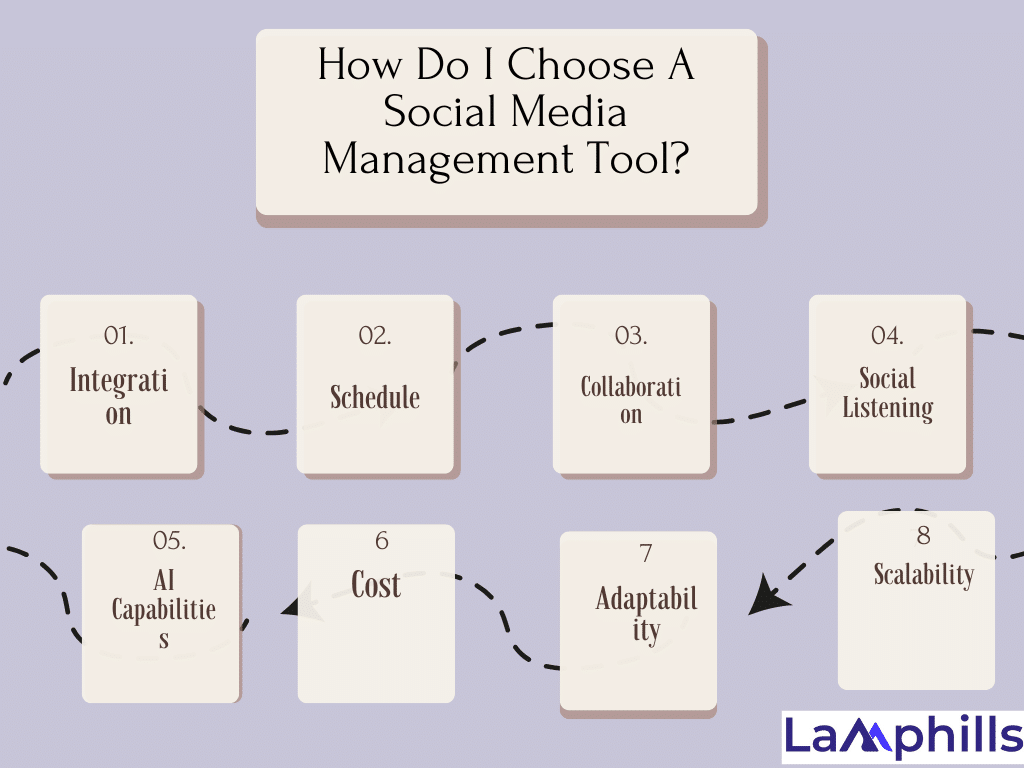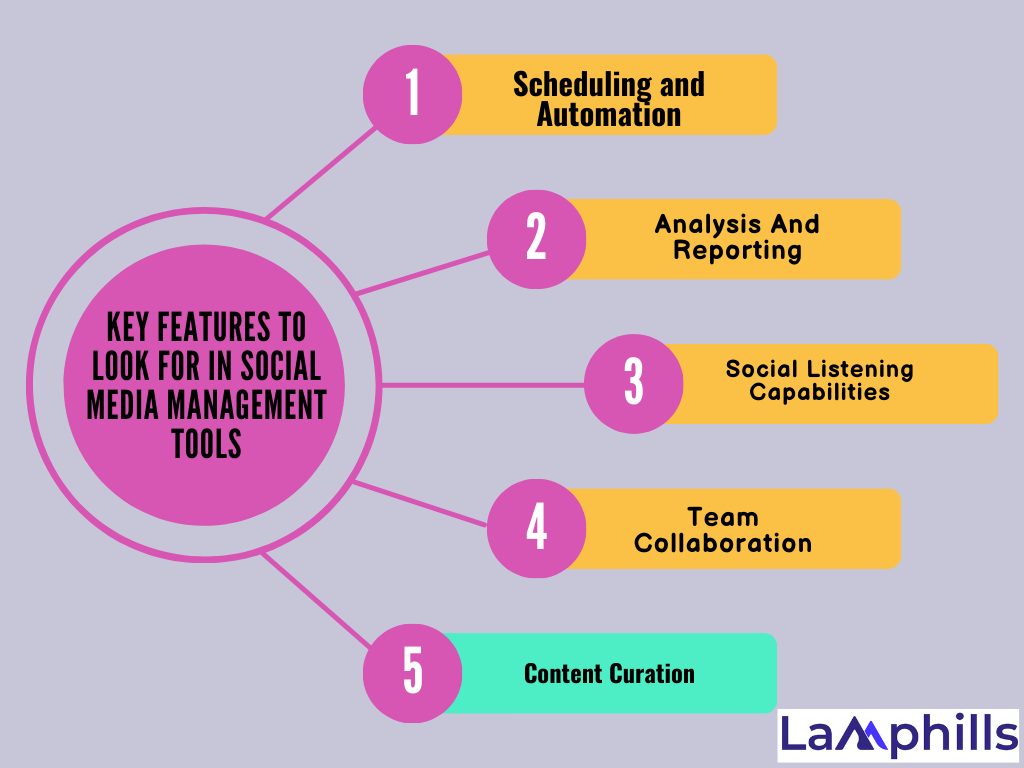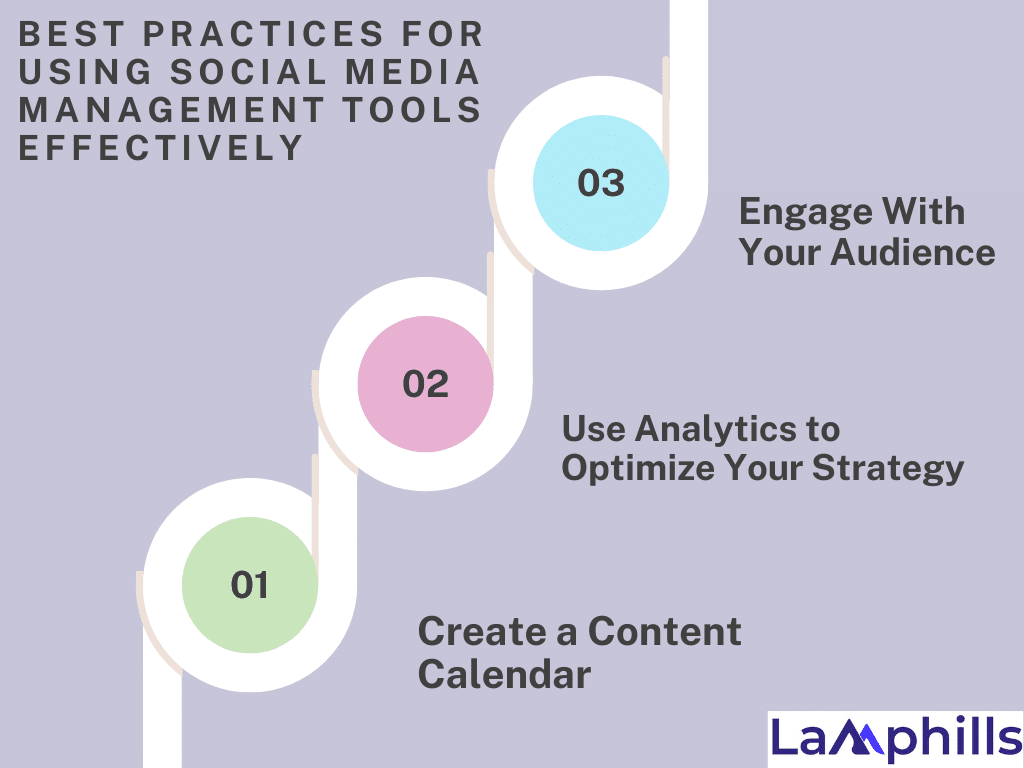Managing a brand’s social media presence is not an easy task. It can feel like a never-ending juggling act: scheduling posts, reacting to comments, tracking analytics, and coming up with new content ideas. However, using the correct tools can make a significant impact. I’ve seen firsthand how the perfect social media management tool can save you hours each week, maintain consistency in your brand’s voice, and even help you increase engagement and reach.
In this article, I will walk you through some of the best social media management tools available. I’ll explain why they matter and what traits to look for. Whether you’re a little business or a growing brand, there’s something for everyone.
Key Takeaways
- Social media management tools are essential for saving time and maintaining a consistent brand voice. They help streamline tasks like scheduling, analytics, and engagement, making it easier for businesses to focus on creating meaningful content.
- When selecting a social media management tool, prioritize features like scheduling, analytics, collaboration, social listening, and scalability. These aspects are crucial for managing accounts effectively, whether you’re a solo entrepreneur or part of a larger team.
- As businesses grow, the ability to scale and adapt a social media tool becomes vital. Look for tools that support additional users, new social platforms, and evolving content strategies, ensuring they can accommodate long-term growth.
- AI-powered features, while not always perfect, can significantly speed up content creation and streamline social media processes. These capabilities, along with automation, help businesses stay on top of their social media game, even with limited resources.
What is A Social Media Management Tool?

A social media management tool enables a user (or a group of users) to more effectively manage one or more social media profiles across several platforms. These tools can range from simple post-scheduling apps to sophisticated AI-powered solutions capable of planning, generating, and publishing content, as well as comment moderation and reporting.
Whatever tool you choose, it will undoubtedly alleviate part of your workload, allowing you to put more time into what is truly important—creating interesting social media content and developing connections with your audience.
Understanding Social Media Management
Social media management can be a major time drain for organizations. If you want to make the most of your social media prospects, you must be proactive. You can’t expect to succeed if you spend only ten minutes every week on social media.
Enterprises with significant marketing expenses have an advantage. It is easier for them to obtain the resources required for social success. Of fact, their social engagement frequently scales correspondingly, making it difficult even for the greatest corporations.
Fortunately, a plethora of social media management tools have emerged in recent years to simplify the lives of busy executives. Indeed, many of them are either free or have plans suitable for the smallest business or entrepreneur. Likewise, many of these social media management tools are useful for agencies and freelancers operating social accounts on behalf of multiple clients.
These tools are used by individuals as well as businesses. Many of them are useful for people who take their social media seriously, including, of course, influencers. These tools frequently make influencers’ lives easier by automating repetitive, time-consuming activities, allowing influencers to focus on the aspects of social media management that they enjoy. These social media management tools will allow you to manage your social media accounts at scale.
How Do I Choose A Social Media Management Tool?

When investing in a new tool for your business, you want something that adds value to your marketing tech stack. So it’s important to carefully weigh your options to ensure that you’re making the right choice. With so many options, choosing the right tool can be overwhelming. Here’s how I suggest you make your decision:
#1. Integration
The first thing to examine is if it integrates with the social media networks you use. It should integrate with all of the major networks, allowing you to manage them all from one spot.
#2. Schedule
Publishing is an important component of social media management; therefore, you’ll need a tool to make the process easier. Look for one that includes capabilities for scheduling social media postings and recommending the best times to post. If you have to schedule hundreds of posts every month, bulk scheduling options come in handy.
#3. Collaboration
Whether you operate with a small team or many clients, you’ll need a platform that facilitates smooth collaboration. Look for one that includes a shared publishing calendar. multi-user support and message approval workflows.
#4. Social Listening
Tracking and engaging with relevant conversions is an important component of social media management. As a result, you’ll need a platform that can monitor certain keywords and tags, as well as brand mentions, through social listening.
#5. AI Capabilities
While not required, AI marketing capabilities provide an extra edge. You can find social networking solutions that have AI-powered capabilities, particularly for content production. Being able to develop ideas and captions instantly can help you speed up the process of making fresh social media postings.
#6. Cost
The size and scope of your organization will determine whether you can make do with completely free social media management software. For solitary businesses and emerging agencies, free or premium tools might serve as a stepping stone toward paid ones.
However, the saying “you get what you pay for” often applies. That is why it is critical to determine which features are most vital to your organization and which are non-negotiable. When determining your social media tool budget, keep the whole cost of social media marketing in mind.
#7. Adaptability
Another critical aspect is how well the program adapts to changes in your social media strategy. Is there a built-in editor for creating more visual content? Can you get hashtag ideas if you wish to start using more hashtags? Make sure it has all of the capabilities you may require so that it can swiftly adjust to your latest social media strategy.
#8. Scalability
One crucial factor is the ability to scale along with your needs. Almost in line with the previous factor, scalability helps you ensure that the tool can support your business growth. At the bare minimum, it should offer the option to add more users and social profiles.
Features To Look For in Social Media Management Tools

Before diving into specific tools, let’s talk about the features that can really make or break your experience with social media management tools. These are things I wish I had known to look for when I first started.
#1. Scheduling and Automation
This is the heart and soul of any social media tool. Scheduling postings in advance allows you to group your work and concentrate on other activities. I adore systems that allow you to schedule various platforms at once—no need to create reminders for Instagram posts after you’ve finished with Twitter!
#2. Analysis And Reporting
Remember when I mentioned having a moment with data? Good tools provide detailed analytics, allowing you to see what works and what doesn’t. If you’re investing time and money in social media, you want to know it’s worthwhile, right? Look for features that allow you to customize reports and track your progress.
#3. Social Listening Capabilities
When I worked with a brand that needed to track talks regarding a new product launch, social listening became essential. Tools like Sprout Social enabled us to track mentions and hashtags, allowing us to respond swiftly to both compliments and criticism. This helped us establish a strong brand reputation at a vital juncture.
#4: Team Collaboration
If you manage social media alone, this may not seem like a big concern. However, when you begin working with a team, having a tool that facilitates collaboration—such as assigning assignments or leaving feedback—can be a game changer. Zoho Social, for example, makes it simple to include team members on certain projects, making cooperation easier.
#5. Content Curation
Watch the video below to have an understanding of how content curation works,
I once worked with a brand that wanted to share industry news alongside its content. Finding and posting this manually was a pain—until I found a tool with content curation capabilities. Tools like Feedly integration with Buffer helped me discover and share articles that kept my client’s followers engaged without spending hours browsing the web.
Examples of Best Social Media Management Tools
On any given day, you’re creating social media posts, repurposing existing content, staying on top of trends across platforms, reviewing your analytics for social media reporting, and so much more.
Trust me, doing all of this manually can make you bone tired and burned out. Luckily, there are plenty of social media management tools to take some of the tasks off your to-do list. Here are a few that have made my life easier over the years:
#1. Buffer (Web, iOS, Android)
Free plan/trial available: Yes. Free forever for up to 3 channels. All paid plans also have a 14-day free trial.
Price: Paid plans begin at $6/month/channel.
Favorite features:
- Store ideas, curated content, and any notes on the go using the Create Space, which has some incredible organization options like tags and a Kanban board layout.
- The Buffer Remix app gives a glow-up to any URL and converts it into an Instagrammable image
- The Start Page helps you ditch dry, boring, and generic link-in-bio tools and enables you to create a customizable landing page that’s authentically you
- Buffer’s social media engagement tools are a game-changer when it comes to keeping on top of comments. Buffer surfaces all your Facebook page and Instagram comments in a single dashboard so you can respond to them right there. It’ll even flag comments that need your attention the most — like questions or those with a negative sentiment — or pinpoint comments from potential customers.
You knew Buffer would be at the top of this list, didn’t you? Yes, I am biased because this is the Buffer blog, but I was a Buffer customer long before becoming a writer. The most appealing aspect of Buffer to me is its simplicity. Buffer appears to be a straightforward tool. Create your accounts and begin social media scheduling. Buffer is my go-to for clients looking for something easy and affordable. It’s simple to set up, and the UI is straightforward, making it ideal for beginners. I’ve used it to schedule posts and immediately see which ones perform best.
#2. Hootsuite
Free plan/trial available: No free plans. Paid plans have a free trial of 30 days.
Price: Pricing starts at $99/month for 10 social media channels.
Favorite features:
- An extensive and unbeatable social listening dashboard to help you monitor trending keywords, competitors, and brand mentions
- Granular control over the access you can provide to various team members. This feature is perfect for complex teams
- You can stack your social media reports against competitors and your industry, in general, to examine how you’re performing against these benchmarks
I have a soft place for Hootsuite because it was the first tool I learned to use effectively. It’s the social media management equivalent of a Swiss Army knife, with features like as scheduling, analytics, and social listening. It’s ideal for brands seeking an all-in-one platform.
Hootsuite is a well-known platform for social media management. And for good reason: I really enjoy its social listening feature. Since acquiring Talkwalker, it has grown in strength.
You can select your area and a topic to investigate, and the platform will provide a detailed report on what people have been saying about that topic over the last week.
That’s not all: Hootsuite also includes an excellent team management function. You can build many sub-teams and assign specific levels of access to your team members. An A+ feature if you own a social media marketing agency or are a freelance social media manager.
The AI assistant can also do a number of things, such as write content using copywriting formulae, repurpose current pieces, and more. However, during testing, I discovered that the majority of outputs require a lot more refinement. I also don’t like how intricate the home dashboard is. It can be daunting, and while Hootsuite has many features, it is not straightforward to use.
#3. Tailwind
Free plan/trial available: Free plan available for one account and five posts per month.
Price: Paid plans begin at $19.99/month for 400 posts per month on one account.
Favorite features:
- Schedule your pins at preset intervals
- A browser extension to create new pins from anywhere and save them to relevant boards
- SmartGuide monitors your Pinterest activity and alerts you on the recommended best practices to inform your Pinterest strategy
Sure, there is lots of social media management software that can help you plan Pinterest pins and manage your account. But nobody does it like Tailwind.
For starters, it focuses solely on Pinterest and is an official Pinterest partner. So, if you want to focus just on this platform or increase your following there, I recommend using Tailwind because it is Pinterest-specific.
What do I find most amazing? In just one click, you can change your photographs into stunning Pin designs. It’s like having your own customized Canva for Pinterest within your social media management platform.
Aside from that, you can schedule pins, add them to preset boards, and share them out at various intervals for maximum engagement. You know, the basics. On testing, Tailwind was quite easy to use! The browser extension was a bit wonky and slowed me down, but that just might be my browser (Brave).
#4. SocialPilot
Free plan/trial available: No free plans. Free trial for all paid plans is available for 14 days. Price: Prices start at $30/month for one user and 10 social media accounts.
Favorite features:
- Separate your dashboards for various clients and white label them with customized colors, logos, etc., to give your customers a premium experience
- Simple approval process with easy, shareable, personalized links — requiring no sign-ups from your clients
- Auto-send various clients personalized and branded social media performance reports
SocialPilot screams agency in my perspective. The price plans include “Agency” and “Agency+” choices. Consider the approval process: you can provide straight tailored links (no sign-ups required) that contain everything your client needs to check on a single screen. The entire procedure is intended to be agency-friendly.
If you handle several clients, you will find the dashboard to be quite useful. You can create distinct sub-dashboards for each client to keep their management separate from the rest. Not only that, but you can whitelabel the platform to offer your clients a more personalized experience.
And, like Hootsuite, there is granular control over which team members may perform particular duties — but SocialPilot is considerably less expensive and easier to use.
I didn’t mention the basic features like scheduling, reporting features, and AI assistant, but SocialPilot aces all the fundamentals, too. Its standout features are just more geared toward agencies.
#5. HubSpot
HubSpot is a top customer platform that includes robust social media management tools. Its unified social inbox allows you to manage all of your social connections in one spot. A CRM integration can help you gather more contextual information from these chats. That way, you’ll know to improve and personalize the client experience.
The tool organizes your efforts by tagging marketing assets and content. So you can link your postings to certain campaigns and track their success.
It also includes all of the basic features you would expect from a social media management software package. This contains tools for publishing, scheduling, keyword tracking, and social media reporting.
Features:
- Keyword monitoring streams to identify important interactions and prioritize the right conversations
- AI-powered social media post generator to simplify publishing
- Best time to post suggestions to optimize scheduling
#6. Zoho Social
Free plan/trial available: No free plan. All paid plans have a 15-day free trial.
Price: Pricing starts at €15/month for one user and 10 social media channels.
features:
- Integration to other Zoho products like CRM and Desk for smooth management
- Build your customized social media listening dashboard to track brand mentions, stay on top of trends, and more
- Automate your social media posts to repeat at a certain cadence to repost your content without any intervention
Zoho Social is ideal for brands with teams who collaborate on social media. I’ve used this to manage larger accounts where numerous people required to use the same site. Its collaborative capabilities allow you to easily assign jobs and keep everyone on the same page.
Zoho is a well-known name in the technology sector. It provides CRM solutions, emailing services, payroll processing, customer service software, and a wide range of other goods for knowledge workers. If you work for a firm that currently utilizes Zoho for a variety of purposes, Zoho Social is an excellent social media management tool to explore.
I would only advocate signing up for Zoho Social if you are currently a Zoho user and your social media marketing strategy is still in the works. Once you’ve developed a roadmap,
#7. Loomly (Web, iOS, Android)
Price: From $42/month for the Base plan with 2 users and 10 social accounts.
Loomly is a solid social media platform with one ridiculously unique feature: you can build your own social network that allows you to post to nearly any service as part of your social media management. It covers all of the other bases, including scheduling, a multi-service inbox, and rudimentary analytics, but it’s this one feature that earns it a spot on our list.
With Loomly, you can set up several scheduling calendars for your various social media demands. Each calendar allows you to add a Facebook, Twitter, Instagram, Pinterest, LinkedIn, Google Business Profile, Snapchat, YouTube, and TikTok account, as well as a Custom Channel.
The Custom Channel feature works with Zapier as the backend. This indicates that you can utilize it to post to other services like Reddit, send an email to your boss, or near enough anything else you can imagine. I won’t even pretend I’m clever enough to come up with all the ways this could be used. If you want to take it even further, here are some other things you can do when you connect Loomly to Zapier.
There are other ways to automate posting to Reddit or sending emails to your boss. What’s interesting about Loomly is how this can tie into your other social networks. It allows you to post the same content on Twitter, Instagram, and your custom network at the same time without having to manage multiple apps.
#8. Iconosquare (Web, iOS, Android)
Iconosquare is my pick for the best social media management tool for visual social networks. price: From $39/month for the Single plan with 1 user and 3 social profiles.
If you value highly visual social networks such as Instagram and TikTok, Iconosquare could be the app for you. While it supports Facebook Pages, X accounts, and LinkedIn Company pages, it prioritizes visual content over text updates.
This is evident in the types of activities that can be scheduled. With an Instagram account, you may plan single photo posts, carousels of several photos, Reels, and Stories—all of which can be cross-posted to numerous Instagram accounts simultaneously. You may also schedule the first comment.
TikTok isn’t as well supported, but you can still plan updates and access content from a shared media library. Of course, you can share versions of all these things on Facebook or X, but it feels like a step back in terms of features.
Similarly, Iconosquare has surprisingly good reports, analytics, and even social listening features—but Instagram is by far the most supported. You can track your competitors, monitor specific hashtags, see when you’re tagged, and loads more.
And like with almost every other tool, you can use an AI to generate captions. But for now, it’s in beta and more limited than some of the other offerings.
#9. Keyhole
keyhole homepage with a sample analysis of Starbucks Coffee social profiles and text that reads “unlock social media insights without the manual grind.”
This is unique from most of the tools on this list in that it’s an influencer tracking and marketing software as well. It performs in-depth analytics to help you vet and compare influencers. The profile analytics help you zero in on influencers who manage to drive authentic engagements.
After your campaign goes live, the tool measures the performance of each influencer and their impact on your campaign goals.
Features:
- Automated social media reports that are shareable and presentation-ready within seconds
- Several reporting features, including brand reporting, campaign reporting, hashtag reporting and influencer reporting
#10. X Pro (formerly Tweetdeck)
X Pro (previously Tweetdeck) is a management tool owned by X that allows you to monitor platform conversations. It provides real-time visibility across many timelines on a single screen. So you can quickly join in on the right conversations and interact with your audience.
Since its rebranding as X Pro, the utility has become part of the X Premium subscription. As a result, you will have access to a variety of premium features that regular users do not have. This includes the option to share longer content and download videos, among other things.
Features:
- Ability to create longer posts to share in-depth information and messages
- A dedicated Highlights tab to showcase your best posts on your profile
- Reply boost so your responses show up more prominently
Best Practices for Using Social Media Management Tools Effectively

Having a great tool is one thing, but using it effectively is another. Here are some tips I’ve picked up over the years:
#1. Create a Content Calendar
A content calendar can become your best buddy. Use it to plan your weekly or monthly posts so you don’t have to scramble for content at the last minute. Tools like Later make this simple, especially if you’re a visual planner.
#2: Use Analytics to Optimize Your Strategy
Check your data frequently and make adjustments to your plan based on what works. For example, when I saw that my client’s audience was more active in the nights, I changed our publishing schedule and witnessed a substantial increase in engagement.
#3. Engage With Your Audience
Use these tools not only to post but also to listen and engage. Respond to comments, share user-generated material, and monitor what your followers are talking about. Social media is a two-way street.
How can businesses effectively measure the ROI of using social media management tools?
To effectively measure the ROI of social media management tools, businesses should track key performance indicators (KPIs) such as engagement rates, conversion rates, and overall reach.
Conclusion
There you have it—my guide to the best social media management tools for brands. Whether you’re looking for an all-in-one solution or just a simple way to schedule posts, there’s a tool out there that fits your needs. Take the time to explore your options, and soon enough, you’ll wonder how you ever managed without one.
Remember, the right tool can transform social media from a daily headache into a streamlined part of your marketing strategy. So go ahead, give a few of these tools a try, and find the one that feels like it was made just for you.






